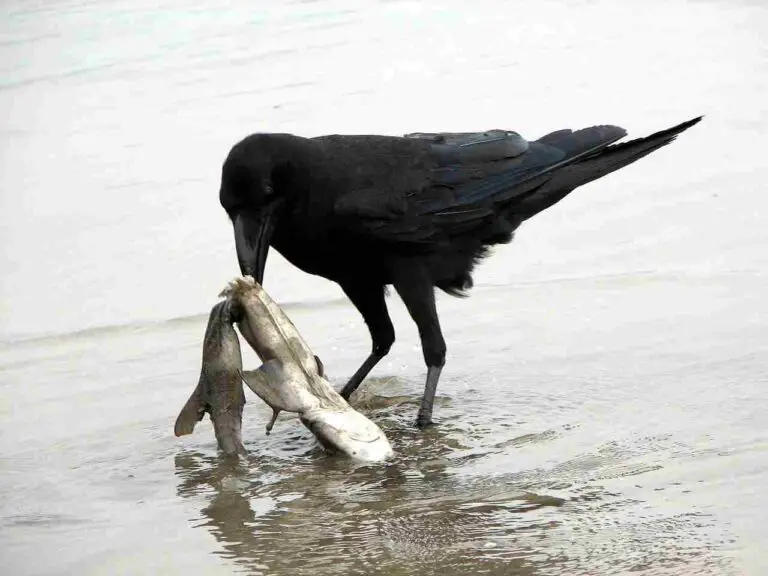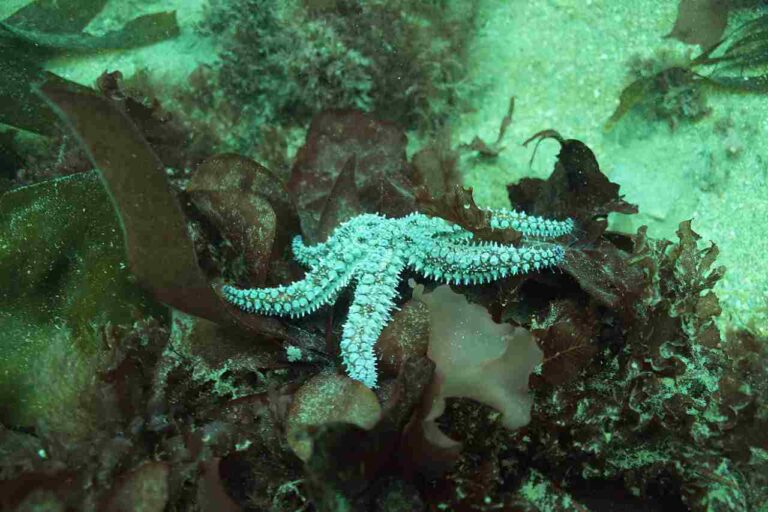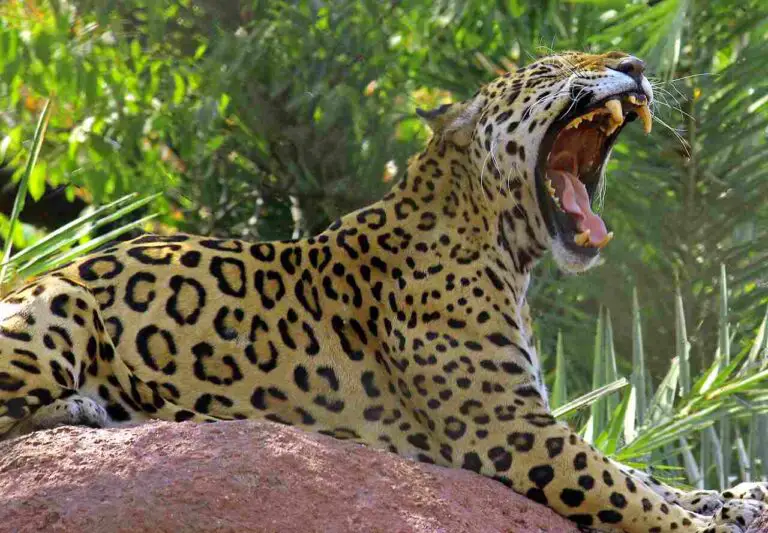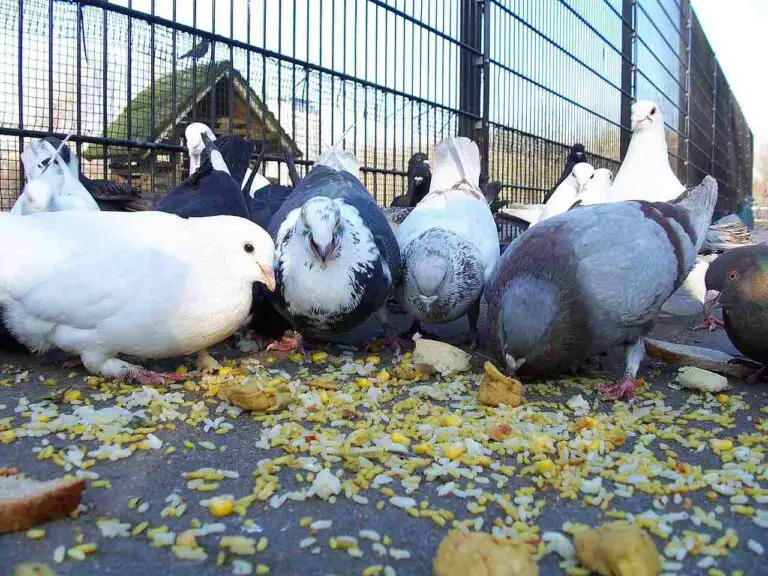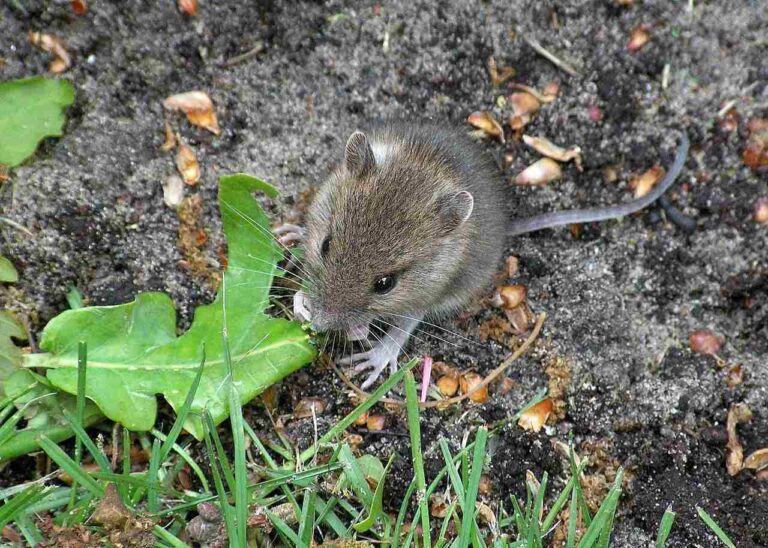Are Snakes Consumers? Exploring the Consumer Role of Snakes
Snakes are consumers in the ecosystem or food chain, because they must feed on other organisms to survive. This is in contrast to the capability of producers, which can manufacture their own food from inorganic resources like solar energy, water and carbon dioxide.
Here, the consumer role of snakes is discussed, and several related queries answered.
Are Snakes Producers?
No, snakes are not producers because they do not have the ability to manufacture their own food from inorganic resources (like sunlight, water, and carbon dioxide) like most producers. Snakes are consumers or heterotrophs, rather than autotrophs.
Reasons Why Snakes are Not Producers
1. They Have No Chlorophyll
Snakes are fascinating creatures that play an important role in various ecosystems. However, when it comes to their role as producers, they fall short due to a simple fact – they have no chlorophyll.
Chlorophyll is a pigment found in plants and some microorganisms that allows them to carry out photosynthesis. This process enables producers to convert sunlight into energy, which they use to manufacture their own food. Snakes, on the other hand, lack this crucial pigment, making them unable to produce their own energy through photosynthesis.
Without the ability to harness sunlight and convert it into usable energy, snakes must rely on other sources for their nutritional needs. This is why they are classified as consumers rather than producers in the food chain. They obtain their energy by consuming other organisms, such as rodents, birds, and even other reptiles.
Snakes have evolved to be highly efficient predators, using their specialized hunting techniques and venomous bites to capture and subdue their prey. They are well-adapted to their specific habitats and have developed a wide range of feeding strategies to ensure their survival.
While snakes may not be producers, their role as consumers is vital in maintaining the balance of ecosystems. By controlling populations of prey species, they help regulate the abundance of certain organisms and prevent overpopulation. This, in turn, has a cascading effect on the entire food chain, influencing the populations of other organisms at different trophic levels.
2. Snakes Cannot Manufacture Their Own Food
Snakes cannot manufacture their own food, which is one of the reasons why they are not considered producers in the food chain. Unlike plants and some microorganisms that have the ability to carry out photosynthesis and produce their own energy, snakes lack the necessary chlorophyll pigment for this process.
Photosynthesis is a vital process that allows producers to convert sunlight into usable energy. Through this process, plants and other photosynthetic organisms are able to synthesize organic compounds, such as glucose, which serve as their source of energy. However, snakes do not possess the chlorophyll pigment required for photosynthesis, making them unable to produce their own food.
Instead, snakes rely on consuming other organisms to obtain the energy and nutrients they need to survive. They are classified as consumers in the food chain because they obtain their energy by feeding on other living organisms. Snakes have evolved to be highly efficient predators, using their specialized hunting techniques and venomous bites to capture and subdue their prey.
Snakes have a diverse diet, depending on their species and habitat. Some snakes primarily feed on rodents, while others may consume birds, amphibians, or even other reptiles. Their feeding habits are influenced by factors such as their size, habitat, and availability of prey. Snakes have adapted to their specific environments and have developed various feeding strategies to ensure their survival.
While snakes cannot manufacture their own food, their role as consumers is crucial in maintaining the balance of ecosystems. By controlling populations of prey species, they help regulate the abundance of certain organisms and prevent overpopulation. This, in turn, has a cascading effect on the entire food chain, influencing the populations of other organisms at different trophic levels.
Drawing from the above, snakes cannot manufacture their own food due to the absence of chlorophyll pigment. This limitation makes them reliant on consuming other organisms to obtain the energy and nutrients they need. Despite not being producers, snakes play a vital role as consumers in maintaining the balance of ecosystems. Their feeding habits and predatory behavior contribute to the regulation of prey populations and have far-reaching effects on the overall food chain.
3. Other Organisms Serve as Food for Snakes
One of the main reasons why snakes are not considered producers in the food chain is because they rely on other organisms as their source of food. Snakes are carnivorous predators that feed on a variety of animals, including rodents, birds, amphibians, and even other reptiles. This dependence on consuming other organisms for sustenance is what categorizes snakes as consumers rather than producers.
Snakes have evolved unique adaptations that allow them to capture and consume their prey. For example, some snakes have venomous bites that immobilize or kill their prey, while others rely on constriction to suffocate their victims. These specialized hunting techniques enable snakes to efficiently obtain the energy and nutrients they need to survive.
The diet of a snake is influenced by factors such as its species, size, and habitat. Different snake species have different preferences when it comes to their prey. For instance, some snakes, like the king cobra, have a particular affinity for consuming other snakes. This selective feeding behavior further emphasizes their role as consumers in the food chain.
Snakes play a crucial role in maintaining the balance of ecosystems by controlling populations of their prey species. By regulating the abundance of rodents, for example, snakes help prevent overpopulation and the potential negative impacts it can have on the environment. This control of prey populations has a cascading effect on the entire food chain, influencing the populations of other organisms at different trophic levels.
In addition to their predatory nature, snakes also serve as a food source for higher-level consumers. Snakes are often preyed upon by larger predators such as birds of prey, mammals, and even other snakes. This makes them an important link in the food chain, as their consumption by higher-level consumers helps to transfer energy and nutrients throughout the ecosystem.
Therefore, snakes are not producers in the food chain because they rely on other organisms as their source of food. Their carnivorous nature and dependence on consuming other animals categorize them as consumers. Snakes play a vital role in maintaining the balance of ecosystems by controlling prey populations and serving as a food source for higher-level consumers.
Are Snakes Secondary Consumers?
Most snakes are secondary consumers in the food chains of their respectively habitats, as they do not have the size, power, consumption scale or trophic impact of apex predators.
However, some snakes like anacondas, tree boas, rock pythons, and king cobras can function as tertiary consumers within their immediate environment.
Reasons Why Most Snakes are Secondary Consumers
1. They Prey Heavily on Primary Consumers
Snakes play a crucial role in the food chain as secondary consumers. One of the reasons why most snakes are classified as secondary consumers is because they prey heavily on primary consumers, such as herbivorous rodents and some insects.
Snakes have evolved to be highly efficient predators, with their specialized hunting techniques and venomous bites. They rely on their keen senses, such as their ability to detect heat signatures, to locate and capture their prey. Once they have caught their prey, snakes use their powerful jaws to swallow it whole.
By preying on primary consumers, snakes help to control their populations and maintain the balance of ecosystems. They play a vital role in regulating the numbers of herbivorous rodents and insects, which in turn helps to prevent overgrazing and the spread of diseases carried by these organisms.
Furthermore, the consumption of primary consumers by snakes contributes to the transfer of energy and nutrients through the food chain. As secondary consumers, snakes obtain the energy and nutrients they need by consuming the tissues of their prey. This energy is then passed on to higher consumers in the food chain, such as cougars, eagles, and hawks, which prey on snakes.
It is important to note that while snakes primarily feed on primary consumers, they are also opportunistic predators and may consume other prey items when available. However, their diet is predominantly composed of primary consumers, which is a defining characteristic of secondary consumers.
Therefore, one of the main reasons why most snakes are classified as secondary consumers is because they prey heavily on primary consumers, such as herbivorous rodents and some insects.
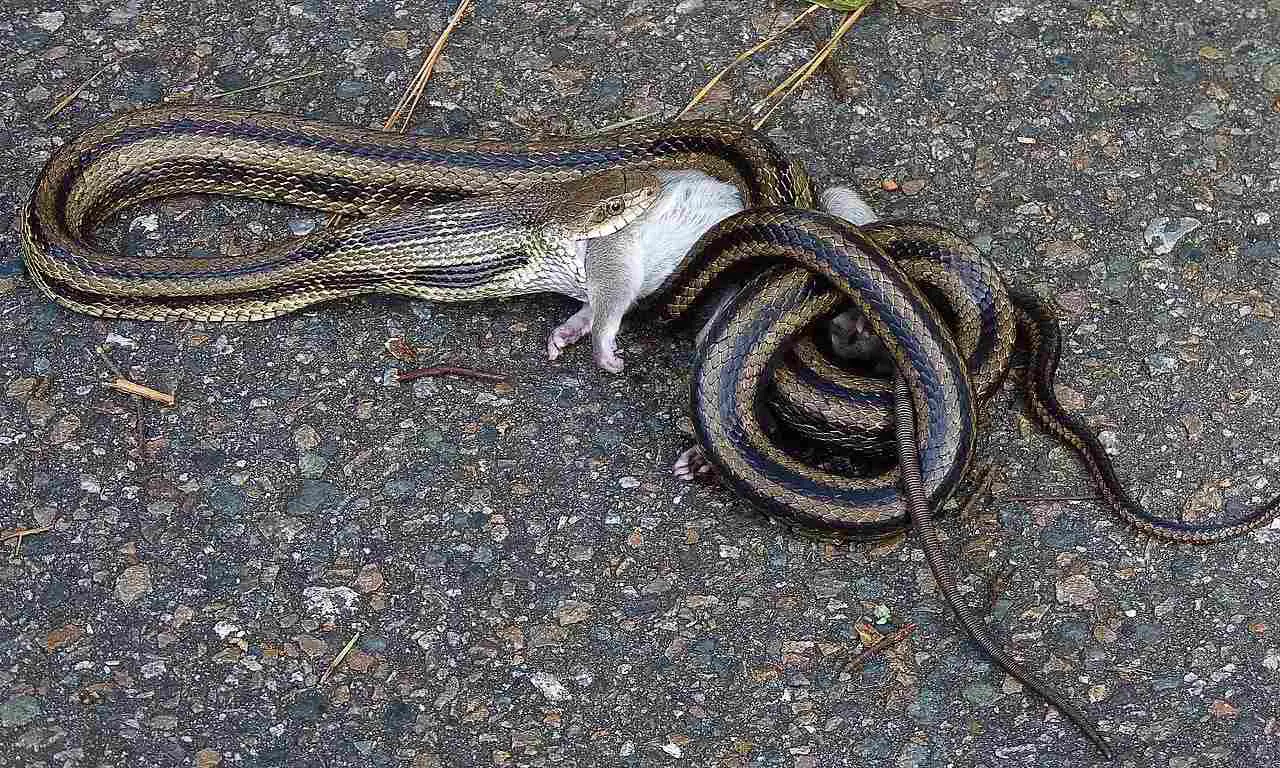
2. Snakes are Preyed Upon by Higher Consumers
Snakes, despite being formidable predators themselves, are not exempt from being preyed upon by higher consumers in their habitats. Animals such as cougars, eagles, and even hawks consider snakes as a potential food source. This predation on snakes is one of the reasons why they are classified as secondary consumers.
Being preyed upon by higher consumers is a natural part of the food chain and ecosystem dynamics. While snakes play a crucial role as secondary consumers, regulating the populations of primary consumers, they themselves become targets for larger predators. This interaction between snakes and their predators helps maintain the balance and stability of ecosystems.
Cougars, also known as mountain lions or pumas, are apex predators that inhabit various habitats across the Americas. These powerful felines have a diverse diet, which includes snakes. Snakes provide a source of energy and nutrients for cougars, contributing to their survival and overall health.
Eagles, with their keen eyesight and impressive aerial abilities, are skilled hunters that prey on a wide range of animals. Snakes, with their elongated bodies and often vibrant colors, can be spotted by eagles from high above. Eagles swoop down to capture snakes, using their sharp talons to secure their prey before taking it to a safe location to consume.
Hawks, known for their agility and speed, are another group of birds that prey on snakes. With their sharp beaks and powerful talons, hawks are well-equipped to capture and subdue snakes. They use their beaks to deliver precise strikes to the snake’s head, immobilizing it before consuming it.
The predation of snakes by higher consumers is an essential part of the energy flow and nutrient cycling in ecosystems. When snakes are consumed by cougars, eagles, or hawks, the energy and nutrients stored in their bodies are transferred to these higher consumers. This transfer of energy allows for the sustenance and growth of the predator populations.
3. Most Snakes are Smaller than Tertiary Consumers in Their Habitats
Most snakes are smaller than tertiary consumers in their habitats, which is one of the reasons why they are classified as secondary consumers. This size difference plays a significant role in the ecological dynamics of snake populations and their interactions with other organisms.
In many ecosystems, there is a clear size hierarchy among consumers. Tertiary consumers, such as large predators or apex predators, tend to be larger in size compared to secondary consumers. This size difference is crucial because it affects the ability of organisms to capture and consume their prey.
Snakes, being secondary consumers, are generally smaller in size compared to apex predators like lions, tigers, or crocodiles. This size difference limits the types of prey that snakes can effectively capture and consume. While snakes are skilled predators, their smaller size restricts them to prey on animals that are within their size range and are not too large or powerful.
For example, a snake may prey on small mammals, birds, or reptiles that are suitable for its size and capabilities. However, it would be challenging for a snake to capture and consume a large mammal like a deer or a buffalo due to the significant size difference and the potential risk involved.
The size difference between snakes and tertiary consumers also affects the energy transfer and efficiency within the food chain. As secondary consumers, snakes obtain energy and nutrients from the primary consumers they prey upon. However, when snakes are consumed by larger predators, such as apex predators, the energy transfer becomes less efficient.
This is because larger predators require more energy to sustain their larger bodies and higher metabolic rates. When a snake is consumed by an apex predator, a portion of the energy and nutrients stored in the snake’s body is lost during digestion and metabolism. As a result, the energy flow and transfer within the food chain become less efficient compared to when snakes directly consume primary consumers.
Therefore, most snakes are smaller than tertiary consumers in their habitats, which contributes to their classification as secondary consumers. The size difference between snakes and apex predators limits the types of prey that snakes can effectively capture and consume. This size hierarchy also affects the energy transfer and efficiency within the food chain.
4. Most Snakes Have a Smaller Predatory Footprint Than Apex Predators
Most snakes have a smaller predatory footprint than apex predators, which is one of the reasons why they are classified as secondary consumers. This size difference plays a significant role in the ecological dynamics of snake populations and their interactions with other organisms.
In many ecosystems, there is a clear distinction between apex predators and secondary consumers in terms of their predatory footprint. Apex predators, such as lions, tigers, or crocodiles, have a larger range and can cover a wider area in search of prey. They are often at the top of the food chain and have the ability to hunt and consume a variety of organisms.
On the other hand, most snakes have a smaller range and are more localized in their hunting grounds. They tend to inhabit specific habitats and have adapted to the conditions and prey available in those areas. This limited range and specialization in habitat selection contribute to their smaller predatory footprint compared to apex predators.
The smaller predatory footprint of snakes is influenced by several factors. Firstly, snakes are ectothermic, which means they rely on external sources of heat to regulate their body temperature. This dependence on external heat limits their ability to venture into areas with extreme temperatures or environments that are not suitable for their survival.
Secondly, snakes have specific dietary requirements and are adapted to prey on certain types of organisms. Their hunting strategies and physical characteristics are optimized for capturing and consuming specific prey, such as small mammals, birds, or reptiles. This specialization in diet further restricts their predatory footprint to areas where their preferred prey is abundant.
Lastly, the size and mobility of snakes also contribute to their smaller predatory footprint. Unlike apex predators that can cover large distances and move quickly, snakes are generally slower and have a more limited range of movement. This makes it challenging for them to actively pursue prey over long distances or in open areas.
Instead, snakes rely on ambush tactics and stealth to capture their prey. They often lie in wait, hidden in vegetation or burrows, and strike when an unsuspecting prey comes within their reach. This hunting strategy requires them to be patient and conserve energy, which is more feasible in smaller hunting grounds.
Therefore, most snakes have a smaller predatory footprint compared to apex predators due to their size, habitat specialization, dietary requirements, and hunting strategies. Their limited range and localized hunting grounds make them secondary consumers in the food chain.
5. The Dietary Range of Snakes is Relatively Narrow
The dietary range of snakes is relatively narrow, which is another reason why most snakes are classified as secondary consumers. Unlike tertiary consumers that have a broader range of prey options, snakes primarily feed on small mammals like rodents.
Snakes have evolved to be highly specialized predators, with specific adaptations that allow them to capture and consume their preferred prey. Their hunting strategies and physical characteristics are optimized for capturing and subduing small mammals, such as mice, rats, and voles. These small mammals make up a significant portion of their diet, providing them with the necessary nutrients for survival.
One of the main reasons for the narrow dietary range of snakes is their unique feeding mechanism. Snakes are known for their ability to swallow prey whole, thanks to their highly flexible jaws and stretchy ligaments. However, this feeding method limits the size of the prey they can consume. Snakes cannot eat prey that is larger than the diameter of their head, which further restricts their dietary options.
Additionally, snakes have specific dietary requirements that are met by consuming small mammals. These requirements include the necessary balance of proteins, fats, and other nutrients essential for their growth and survival. Small mammals like rodents provide a rich source of these nutrients, making them an ideal prey choice for snakes.
The narrow dietary range of snakes also plays a role in their position as secondary consumers in the food chain. As secondary consumers, snakes rely on primary consumers, such as herbivores or insectivores, as their main source of food. By feeding on these primary consumers, snakes help regulate their populations and maintain the balance within the ecosystem.
Furthermore, the narrow dietary range of snakes is influenced by their habitat and the availability of prey. Snakes are often found in specific ecosystems where their preferred prey is abundant. For example, snakes that inhabit grasslands or agricultural areas may primarily feed on rodents that are commonly found in these habitats. This specialization in habitat selection further limits their dietary options and contributes to their role as secondary consumers.
Is a Rattlesnake a Secondary Consumer?
A rattlesnake is usually classified as a secondary consumer in the ecosystem due to its feeding habits. Like most snakes, the diet of a rattlesnake is dominated by primary consumers such as rats and mice. This dietary preference aligns with the reasons why snakes are considered secondary consumers.
One reason why rattlesnakes are classified as secondary consumers is their heavy reliance on primary consumers as a food source. Rattlesnakes primarily prey on small mammals like rats and mice, which are considered primary consumers in the food chain. By consuming these primary consumers, rattlesnakes occupy a position one level higher in the trophic pyramid.
Another reason why rattlesnakes are considered secondary consumers is their vulnerability to predation by higher-level consumers. While rattlesnakes are skilled predators themselves, they are also preyed upon by larger predators such as birds of prey and other carnivorous mammals. This places them in the middle of the food chain, with both predators and prey.
In terms of size, most rattlesnakes are smaller than the tertiary consumers in their habitats. Tertiary consumers are typically larger predators that occupy the top of the food chain. Rattlesnakes, although formidable predators, are generally smaller in size compared to animals like large carnivores or apex predators. This size difference further supports their classification as secondary consumers.
Additionally, the predatory footprint of rattlesnakes is relatively smaller compared to apex predators. Apex predators have a wide range of prey options and can exert a significant influence on the ecosystem. In contrast, rattlesnakes have a more limited range of prey, primarily consisting of small mammals. Their impact on the ecosystem is more localized, making them secondary consumers.
Furthermore, the dietary range of rattlesnakes is relatively narrow, which is another characteristic of secondary consumers. Rattlesnakes have specific dietary requirements that are met by consuming small mammals like rats and mice. These prey species provide the necessary nutrients for the rattlesnake’s survival and growth. Their reliance on a specific type of prey further solidifies their role as secondary consumers.
Therefore, a rattlesnake is typically classified as a secondary consumer in the ecosystem. Its diet, which is dominated by primary consumers like rats and mice, aligns with the reasons why most snakes are considered secondary consumers. The heavy reliance on primary consumers, vulnerability to predation, smaller size compared to tertiary consumers, limited predatory footprint, and narrow dietary range all contribute to the classification of rattlesnakes as secondary consumers.
Are Snakes Decomposers?
Snakes cannot be classified as decomposers because they do not directly facilitate the process of biodegradation like fungi and bacteria, or detritivores like earthworms. Rather, they are consumers that feed on other organisms. However, most snakes can feed on dead animals or carrion, with several species also consuming animal remains that are undergoing decomposition. While this is a form of scavenging, it does not provide sufficient context to classify snakes as typical decomposers, detritivores, or scavengers.
When snakes die, their remains undergo decomposition by saprophytes and other decomposer organisms. These decomposers play a crucial role in breaking down the organic matter of the snake’s body, returning nutrients to the ecosystem. Through the process of decomposition, the organic material is broken down into simpler compounds that can be utilized by other organisms in the food chain.
Decomposition is a vital part of the nutrient cycle in ecosystems. It involves the breakdown of organic matter, such as dead plants and animals, into simpler substances that can be recycled and reused by other organisms. Fungi and bacteria are the primary decomposers responsible for breaking down organic matter, and they play a crucial role in the decomposition process.
While snakes themselves do not actively participate in the decomposition process, their role as consumers indirectly contributes to the nutrient cycle. By feeding on other organisms, snakes help regulate populations and maintain the balance within ecosystems. When snakes consume prey, they are essentially transferring energy and nutrients from one trophic level to another.
In the case of snakes feeding on animal carcasses or carrion, they are acting as scavengers rather than decomposers. Scavengers play an important role in the ecosystem by consuming and removing dead organisms, preventing the spread of disease and recycling nutrients. However, it is important to note that not all snakes exhibit scavenging behavior, and their diet primarily consists of live prey.
While snakes may occasionally consume animal remains that are undergoing decomposition, this behavior alone does not classify them as decomposers. Snakes primarily rely on live prey for their survival and do not actively contribute to the breakdown of organic matter. Instead, they play a crucial role as consumers within the food chain, helping to maintain the balance of ecosystems.
FAQs
1. Is Snake a Consumer or Producer?
When it comes to the role of snakes in the ecosystem, they are primarily consumers rather than producers. This means that snakes rely on other organisms for their source of energy and nutrients, rather than being able to produce their own food through photosynthesis like plants.
Snakes lack chlorophyll, the pigment necessary for photosynthesis, which is why they cannot manufacture their own food. Instead, they must obtain their energy by consuming other organisms, typically small animals such as rodents, birds, or insects.
There are several reasons why snakes are considered secondary consumers rather than producers. Firstly, snakes rely heavily on other organisms as their source of food. They are predators that play an important role in controlling populations of primary consumers in their habitats.
Secondly, snakes are also preyed upon by higher consumers in the food chain. They serve as a vital food source for animals such as birds of prey, larger mammals, and even other snakes. This places them in the position of being secondary consumers within the ecosystem.
Additionally, most snakes are smaller in size compared to tertiary consumers in their habitats. They do not have the same predatory capabilities or occupy the same ecological niche as apex predators. Therefore, they are not considered tertiary consumers.
Furthermore, the dietary range of snakes is relatively narrow compared to other consumers in the ecosystem. They are primarily carnivorous, feeding on other animals, and do not consume a wide variety of plant matter or detritus like decomposers.
2. Why Do We Call a Snake a Consumer?
Snakes are referred to as consumers because they rely on other organisms for their source of energy and nutrients. This is in contrast to producers, such as plants, which can produce their own food through photosynthesis.
As mentioned earlier, snakes lack chlorophyll, the pigment necessary for photosynthesis. Without the ability to manufacture their own food, snakes must obtain their energy by consuming other organisms. They are carnivorous predators that feed on a variety of small animals, including rodents, amphibians, other reptiles, and birds.
The classification of snakes as consumers is based on their feeding habits and their position in the food chain. They are considered secondary consumers because they rely on primary consumers, such as herbivores, as their source of food. By preying on primary consumers, snakes play a crucial role in controlling the populations of these organisms in their habitats.
Furthermore, snakes themselves are also preyed upon by higher consumers in the food chain. They serve as a vital food source for animals such as birds of prey, larger mammals, and even other snakes. This further solidifies their role as consumers within the ecosystem.
3. Are Snakes Omnivores?
Snakes are not omnivores. They are generally carnivorous, meaning they primarily feed on other animals. This distinguishes them from omnivores, which have a diet that includes both plants and animals. Snakes have evolved to be highly efficient predators, with specialized adaptations for capturing and consuming their prey.
The diet of snakes typically consists of rodents, amphibians, other reptiles, and birds. They are skilled hunters, using their keen sense of smell and heat-sensing pits to locate and ambush their prey. Once they have captured their prey, snakes use their powerful jaws to swallow it whole. Their flexible jaws allow them to consume prey that is much larger in size than their own head.
4. Are Snakes Consumers in the Food Chain?
Yes, snakes are consumers in the food chain. As carnivorous animals, they play an important role in the ecosystem by feeding on other organisms. Snakes are considered secondary consumers as they prey on primary consumers such as rodents, amphibians, reptiles, and birds.
In the food chain, snakes occupy a crucial position as predators. They help regulate the population of their prey species, preventing overpopulation and maintaining a balance in the ecosystem. By consuming primary consumers, snakes indirectly impact the population of plants and other organisms lower in the food chain.
Snakes are well-adapted hunters, using their specialized senses to locate and capture their prey. Their ability to swallow prey whole allows them to consume animals larger than their own head. This unique feeding behavior enables snakes to efficiently extract nutrients from their prey and sustain themselves in their habitats.
While snakes are consumers in the food chain, it’s important to note that they are usually not the top predators. They are often preyed upon by higher consumers such as birds of prey and larger mammals. This dynamic interaction between snakes and other organisms further highlights their role as consumers in the ecosystem.
5. Are Snakes Producers, Consumers, or Decomposers?
Snakes are consumers in the ecosystem. They play a vital role as predators, feeding on other organisms to obtain their energy and nutrients. Unlike producers, such as plants, snakes cannot manufacture their own food through photosynthesis because they lack chlorophyll. Instead, they rely on consuming other organisms to meet their nutritional needs.
In terms of decomposition, snakes are not considered decomposers. Decomposers are organisms that break down dead organic matter, such as plants and animals, into simpler substances. Snakes do not have a saprophytic or detritivorous lifestyle, which are characteristics of decomposers. They do not actively participate in the decomposition process.
As consumers, snakes occupy a specific niche in the food chain. They are secondary consumers, preying on primary consumers like rodents, amphibians, reptiles, and birds. By consuming these primary consumers, snakes help regulate their populations and maintain a balance in the ecosystem. This, in turn, affects the population of plants and other organisms lower in the food chain.
Snakes have evolved specialized hunting techniques and sensory adaptations to locate and capture their prey. Their ability to swallow prey whole allows them to consume animals larger than their own head, enabling them to extract nutrients efficiently. While snakes are consumers, it’s important to note that they are often not the top predators in their habitats. They can be preyed upon by higher consumers, such as birds of prey and larger mammals.
6. Are Snakes Carnivores?
Yes, snakes are carnivores. They feed on other organisms as their primary source of nutrition. As predators, snakes have adapted to consume a wide variety of prey, including small mammals, birds, reptiles, amphibians, and even other snakes. Their diet consists exclusively of animal matter, making them true carnivores.
Snakes have evolved specialized anatomical features and hunting strategies to capture and consume their prey. Their long, flexible bodies allow them to maneuver through various environments and strike at their targets with precision. Many snakes possess venomous fangs or constriction abilities to immobilize and subdue their prey before consuming it.
Being carnivores, snakes play an important role in maintaining the balance of ecosystems. By controlling the population of their prey, they help regulate the abundance of certain species and prevent overpopulation. This, in turn, has cascading effects on the entire food chain, influencing the distribution and abundance of other organisms.
7. Are Snakes Tertiary Consumers?
When it comes to the role of snakes as tertiary consumers, it’s important to note that not all snakes fall into this category. While some snakes, like pythons, can be considered tertiary consumers, not all snakes fit this classification.
Tertiary consumers are organisms that feed on secondary consumers, which in turn feed on primary consumers. They occupy the highest level in the food chain and play a crucial role in regulating the populations of lower trophic levels. However, the dietary habits of snakes vary greatly depending on the species and their specific ecological niche.
Some snakes primarily feed on primary consumers, such as insects, rodents, or small birds, placing them in the secondary consumer category. These snakes contribute to the regulation of primary consumer populations and indirectly impact the abundance of plant species that the primary consumers feed on.
On the other hand, snakes like pythons are known to consume larger prey, including mammals and birds, which places them higher up in the food chain as tertiary consumers. These snakes have a broader dietary range and can exert top-down control on the populations of both primary and secondary consumers.
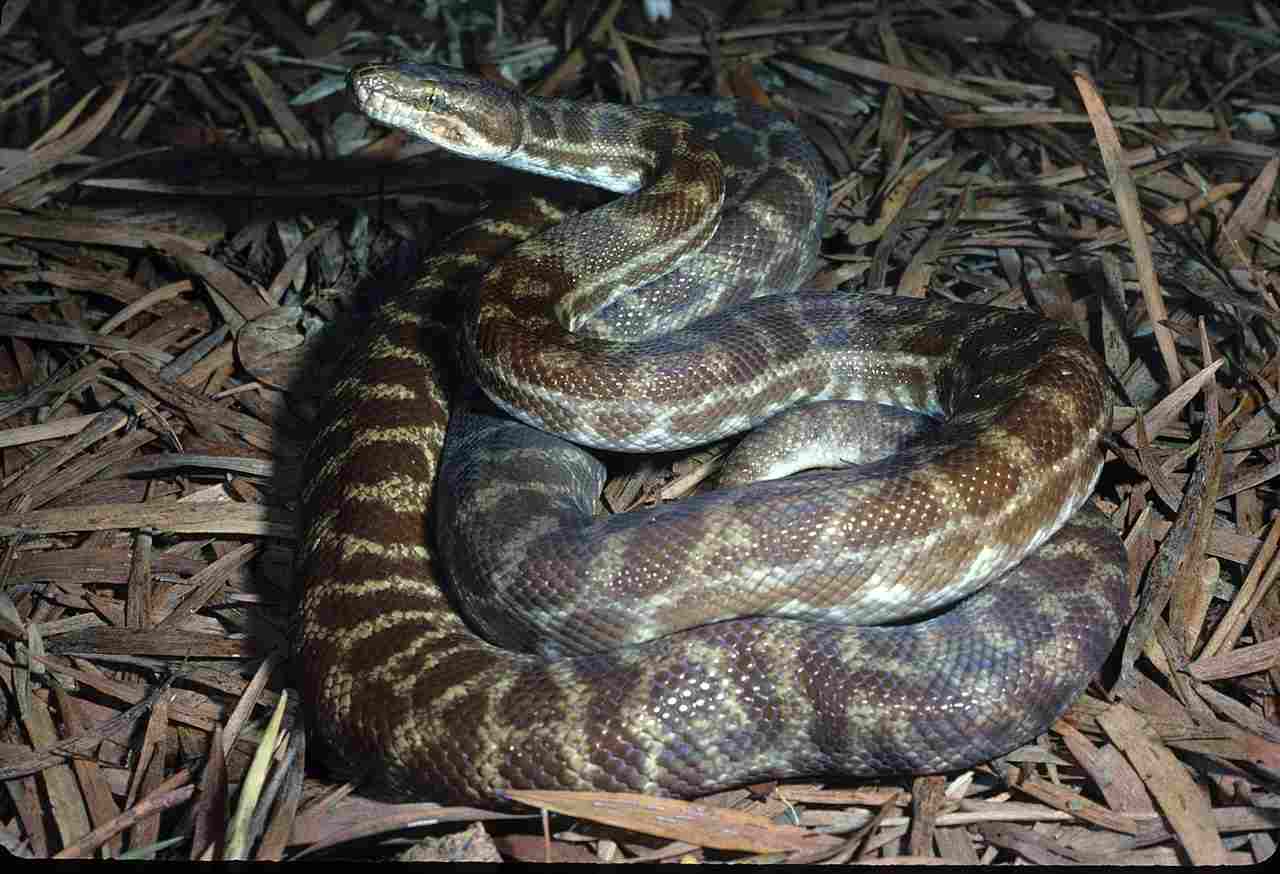
8. Are Snakes Herbivores?
Contrary to some speculations, snakes are not herbivores. They are primarily carnivorous, meaning their diet consists mainly of biomass from other animals. Snakes have evolved to be highly efficient predators, with specialized adaptations such as venomous fangs or constriction techniques to capture and subdue their prey.
Snakes lack the necessary digestive enzymes and specialized teeth for efficiently breaking down and extracting nutrients from plant material.
The majority of snake species rely on a diet of small mammals, birds, reptiles, amphibians, and invertebrates. Their feeding habits play a crucial role in maintaining the balance of ecosystems by controlling the populations of their prey. By regulating the numbers of these animals, snakes indirectly impact the abundance of plant species that the prey feed on.
9. Are Snakes Scavengers?
Snakes can occasionally scavenge by feeding on the remains of dead organisms. This scavenging behavior is more commonly observed in larger snake species that have the ability to consume larger prey.
When a snake comes across a carcass, it may take advantage of the opportunity to feed on the already deceased animal. This behavior is particularly common in snakes that inhabit environments where food sources may be scarce or unpredictable. By scavenging, snakes can supplement their diet and increase their chances of survival in challenging conditions.
However, it’s important to note that scavenging is not a primary feeding strategy for snakes. They are highly efficient predators and rely mainly on hunting and capturing live prey. Snakes have evolved specialized adaptations, such as venomous fangs or constriction techniques, to capture and subdue their prey effectively.
The ability to scavenge allows snakes to be opportunistic feeders, taking advantage of available food sources when necessary. This flexibility in their feeding behavior contributes to their adaptability and survival in various habitats.
10. Is a Python a Carnivore or Omnivore?
A python is a carnivore, meaning it primarily feeds on other animals. With their powerful bodies and sharp teeth, pythons are well-equipped to capture and consume a wide range of prey. They are known to feed on mammals, birds, and reptiles, including rodents, rabbits, and even larger animals like deer and antelope.
Pythons are constrictors, which means they wrap their bodies around their prey and squeeze until it suffocates. Once the prey is immobilized, the python will swallow it whole, using its flexible jaws to stretch its mouth around the prey.
Conclusion
* In this article, we have explored the consumer role of snakes and whether they can be considered producers, secondary consumers, or decomposers.
* We have discussed the reasons why snakes are not producers, including their lack of chlorophyll and inability to manufacture their own food.
* Additionally, we have examined the reasons why most snakes are secondary consumers, such as their heavy reliance on primary consumers and being preyed upon by higher consumers.
* We have also considered whether a rattlesnake can be classified as a secondary consumer and whether snakes can be considered decomposers.
* Finally, we have addressed frequently asked questions about snakes’ consumer role, including their classification as carnivores, herbivores, or omnivores, and their position in the food chain.

